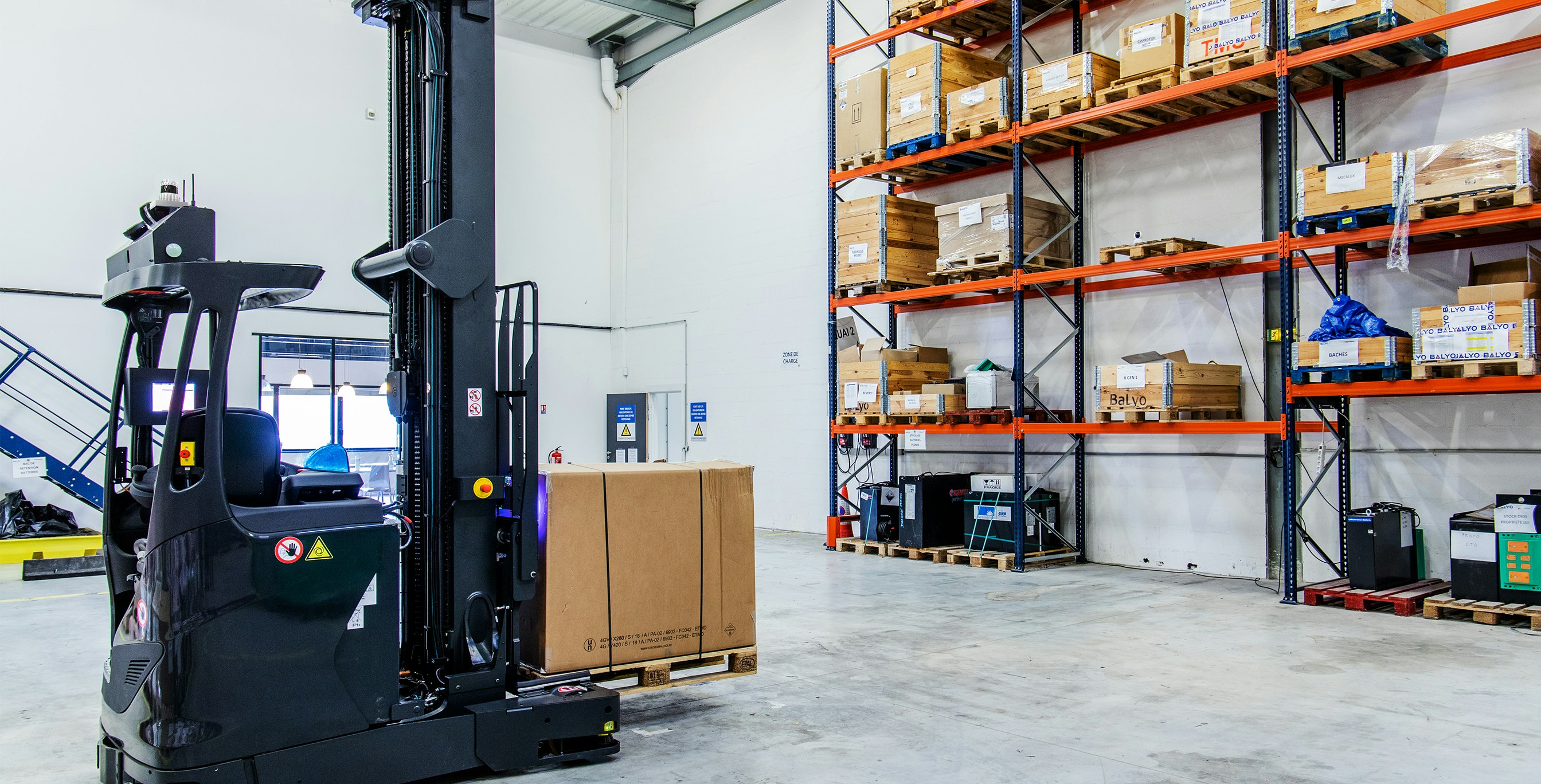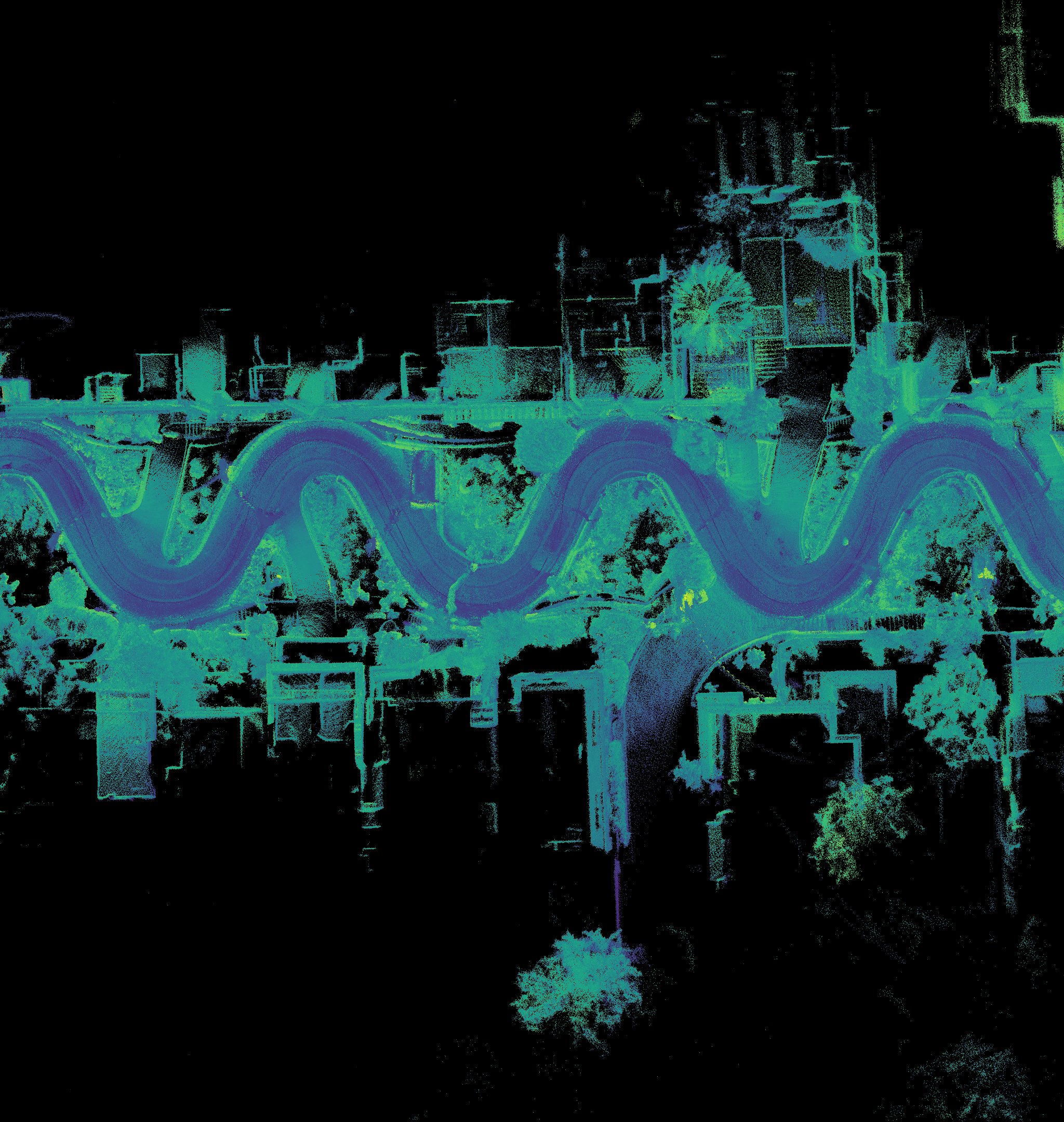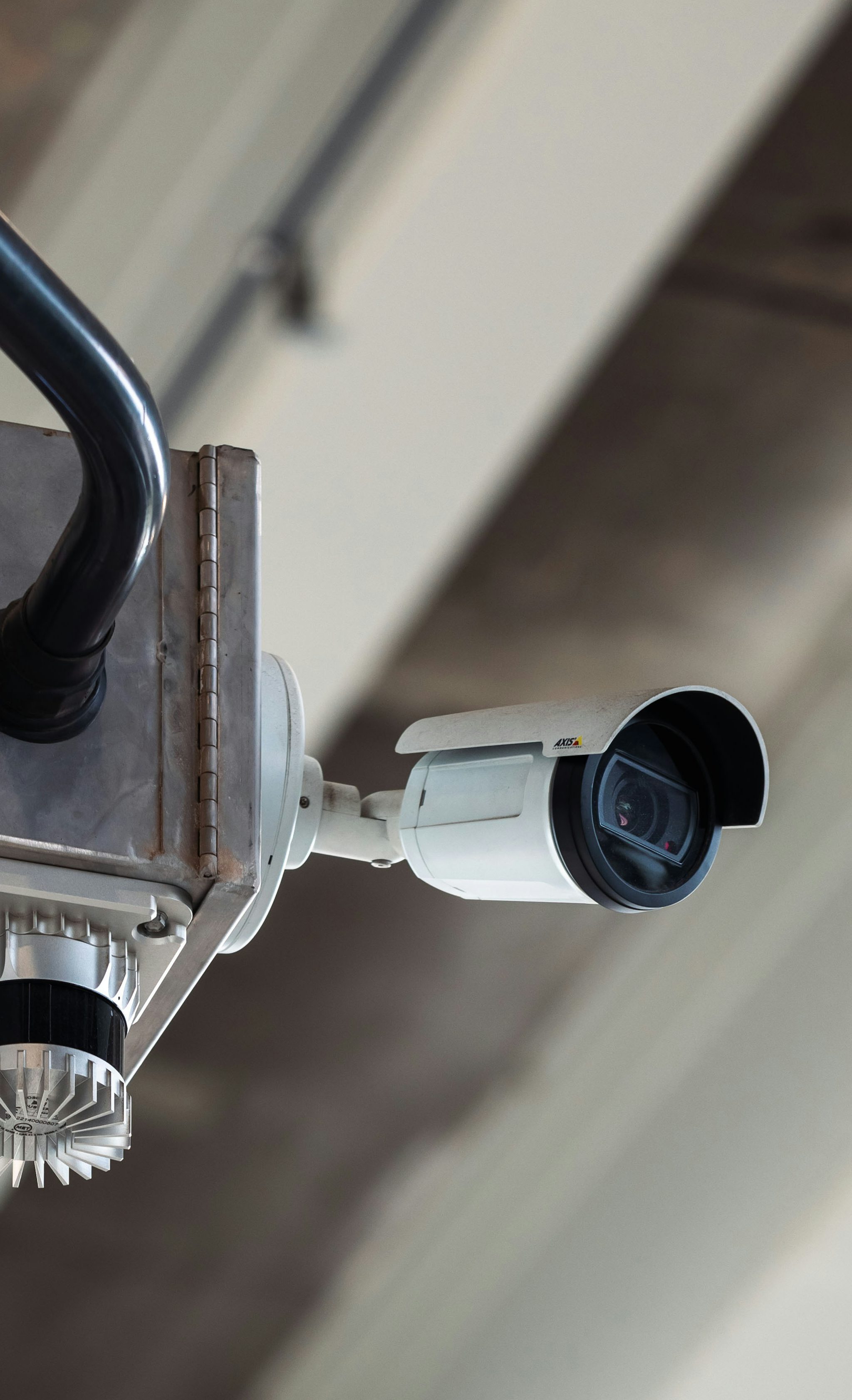Warehouse automation is in the midst of drastic change. The increase in eCommerce demand, coupled with labor shortages, is accelerating the need for automated warehouse operations. Already today, tasks such as picking items for shipment or transporting pallets through a warehouse have changed hands from humans to industrial robots, and there are many more tasks to come. As the warehouse environment evolves, operations require faster, safer, and more flexible robots. And to make these improved robots a reality, they need a full 3D sensing suite.
First, to understand where the market is going, let’s look at where it’s coming from. The first generation of industrial robots introduced into warehouses are known as Automated Guided Vehicles (AGVs). AGVs operate in much the same way that trains do: on a fixed route (usually rail, magnetic, or with precisely aligned painted markers). Changes to that route require a major investment of time and money to renovate warehouse infrastructure. AGVs, just like trains, are great for highly predictable, repeatable movements of goods along a fixed route in a warehouse.
The increased demand for shipping speed is forcing warehouses to adopt more flexible inventory management systems and processes. Unfortunately, AGVs have been unable to keep pace with the need for flexibility due to their inherent design rigidity.
This need for speed and flexibility is driving innovation for a new type of industrial robot: the Autonomous Mobile Robot (AMR). AMRs do not need a fixed path, they can move autonomously and intelligently throughout the warehouse, just as a worker might. This flexibility allows AMRs to work in collaboration with warehouse workers to retrieve and tow goods in a dynamically changing warehouse. To do this, AMRs are equipped with a modern sensing suite for intelligent navigation, interaction with their surroundings, and active safety features.

Autonomous Mobile Robots are a critical component of the automated warehouse. Due to their ability to adapt and interact with their environment, they have been able to offload more tasks from humans and increase warehouse throughput. However as AMRs continue to take on greater numbers of tasks, the sensor requirements on the AMR continue to grow in complexity. What used to be just a few sensors per robot for basic route navigation and safety has now grown to several sensors, each with a dedicated purpose. In fact, each time an AMR adds a new task, it often adds at least one or two new sensors.
The AMR job description
The mission profile of an AMR typically entails: 1. Navigating to goods in the warehouse; 2. Picking up the goods to be moved; 3. Safely navigating and carrying these goods to their destination point; 4) Offloading the goods. As the AMR navigates, it completes multiple sub-tasks, such as determining precise location in the warehouse, ensuring the cargo is secure, watching for obstacles in the path of travel, and detecting any drop-offs or uneven surfaces. Currently, each of these tasks is solved with a separate individual sensor.
The current sensor suite
- Navigation: The navigation sensor is the most important sensor on the robot. The robot’s entire perception stack is built around this one device. This sensor localizes the vehicle along the route. In most cases, a 2D Lidar sensor is assigned this job. The 2D sensor looks for fixed objects, like racking or posts, high above the warehouse floor.
- Obstacle detection: Obstacle detection sensors are usually mounted on the lower half of the robot, midway between the floor and the 2D navigation sensor. These sensors detect obstacles in the immediate path. This ensures the robot can navigate around objects that are below the 2D plane of the navigation sensor.
- Cargo detection: The AMR needs to be able to accurately guide forks into a pallet and ensure the cargo is secure while driving. This is solved by mounting cameras or additional 2D lidar sensors near the forks or cargo area.
- Ground detection: While driving through the warehouse, it’s important to avoid drop-offs, ramps, grates, or any uneven surface. Separate lidar sensors constantly monitor the contour of the ground and warn the robot of any deviation.

The need for individual sensors to complete separate tasks stems from the limited capabilities of legacy sensors. More specifically, it’s due to the limited field of view of 2D lidar sensors. Since a 2D lidar sensor can only “see” in one plane, multiple sensors must be mounted at different heights and angles in order to ensure full coverage of the vehicle.
In addition to the lack of coverage, the 2D lidar sensors can even run into trouble with their single task due to the limited data. Let’s take navigation as an example. While the sensor can navigate well in an unchanging warehouse, a 2D lidar sensor can frequently get lost in a dynamic warehouse. In a dynamic warehouse, the vehicle needs to depend on unique features to determine the location (think like how parking garages sometimes use different colors for different floors). With the limited data from a 2D lidar sensor, the AMR has much less information to use in order to determine its location in the warehouse causing the robot to become lost. This results in downtime and requires a manual restart of the robot.

The 2D segmented approach is complex, expensive, and time-consuming. Solving each of these tasks individually requires multiple vendors, additional time spent on each implementation, and ultimately adds more points of failure to the AMR — along with low performance on the tasks themselves.
This is the way…
3D lidar offers a new opportunity for AMRs to navigate in dynamic environments, improve object detection performance, and increase operational speeds, all while simplifying their sensor suite.
A single 3D sensor can replace up to 4 different 2D lidar sensors
All of an AMR’s tasks can be completed with a single 3D lidar sensor. 3D lidar offers a wide vertical field of view and high resolution – enabling the AMR to simultaneously see high into the racking for navigation and cargo picking and down to the wheels of the vehicle for obstacle avoidance and ground detection. . For AMRs to reach huge volumes, they need to become simple, reliable, and cost-effective. Simplifying the sensor suite is a key step toward that end. The ongoing consolidation from many 2D lidar sensors to one or two 3D lidar sensors will reduce the bill of materials cost, decrease implementation time, and reduce points of failure, all while improving navigation.

Why Ouster?
Ouster’s digital architecture provides wide field-of-view high-resolution, 3D coverage, with the reliability needed for industrial applications. The OS0 sensor provides 360° horizontal and 90° vertical fields of view, with a range of up to 50 meters. We offer three different resolution options, 32, 64, and 128 channels. A single 128 channel OS0 produces the equivalent of 128 individual 2D lidar sensors.
The high resolution and wide field of view are enabling warehouse customers to speed up their AMRs to drive lower costs and higher revenues in their warehouses. Today 3D lidar is capable of taking over the tasks of numerous individual 2D lidar sensors, but even more, 3D lidar provides a stable foundation for adding additional features – like advanced human perception to further improve safety. AMRs of the future will run on 3D lidar, and we look forward to making that future a reality with you.



